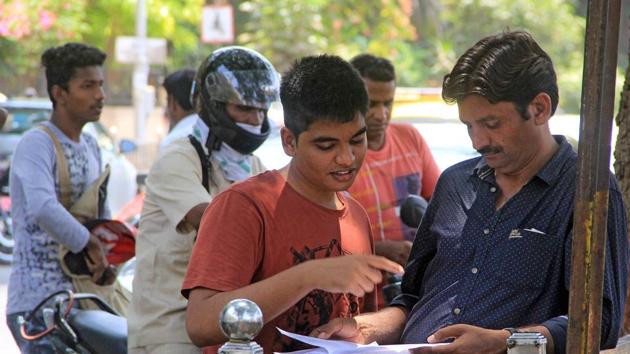JEE Advanced 2017 Paper 1 and 2: Detailed analysis of the exam
There were 18 questions each in Paper 1 and 2 of the Joint Entrance Exam (JEE) Advanced 2017.
There were 18 questions each in Paper 1 and 2 of the Joint Entrance Exam (JEE) Advanced 2017.

Paper 1 covered multiple answers correct type questions, integer type questions, as well as the newly introduced three-column matrix match. Overall Paper 1 of JEE Advanced 2017 was designed with a good mixture of conceptual and tricky questions.
In Paper 2, there were more than one option correct type questions, single option correct type questions, and paragraph type questions with respect to the types of questions. It seemed relatively difficult than Paper 1.
Paper 1
There was negative marking in two sections but no negative marking in integer type questions this year. The introduction of partial marking in the question of one or more than one correct answers would have given some relief to students and could also boost cut-offs.
Physics
The paper was relatively easier than that of previous years. However, ambiguity in one question was observed, while most of them were found to be of an easy or moderate level. One question was asked directly from NCERT exampler. Paper did not contain questions of lengthy calculations hence students must have got sufficient time to crack the tricky questions.
Chemistry
Chemistry was a blend of some easy problems and few relatively difficult ones. A bit of xxx was observed in the pattern by introducing a mixture of three column matching. Although many questions were from NCERT syllabus but few questions (like wave functions of orbitals) were asked beyond the syllabus. Physical chemistry and organic chemistry portion were given a little bit more weightage than inorganic chemistry. As usual, this paper of JEE Advanced was conceptual. We can say that the Paper 1 of Chemistry was quite good and encouraging for average students as well.
Mathematics
In mathematics, the level of the paper was easy to moderate. In comparison to the practice of previous years, the question required only basic understanding. No question involving critical thinking was there. Matrix match involving 3 column was introduced, but if a student got the hang of it, they would have found it easy to crack. Overall, the score of students is expected to be an all-time high as far as Paper 1 of mathematics is concerned.
Paper 2
In line with Paper 1, there was negative marking in two sections and no negative marking in the section containing paragraph based questions.
Physics
Overall physics part in Paper 2 was slightly difficult as compared to that in Paper 1. Questions on rotational mechanics were found to be on the difficult side. One question on rotational mechanics was also found to be ambiguous. Paper 2 was designed to check the depth of understanding and analytical skills of students. It thoroughly covered all the expected difficult portions in physics for JEE.
Chemistry
Paper 2 of chemistry was also found to be relatively difficult than Paper 1. Most of the questions were framed in tricky language, especially in Section II, where more than one options were correct. In a nutshell, a student must have in-depth knowledge of all sections of chemistry (physical organic and inorganic) to get good marks in this paper. Organic chemistry questions were based on conceptual knowledge. Questions of physical chemistry were mostly theoretical but required critical thinking of the basic concepts, which seemed beyond the scope of NCERT. Overall, it was a low scoring paper.
Mathematics
The level of Paper 2 was again easy to moderate. Most of the questions required basic information. Only 2-3 questions required in-depth knowledge. While in Paper 1 question were mainly from algebra and coordinate, Paper 2 involved rest of the topics like vector, 3D, integral calculus etc. One question in maths was ambiguous and none of the given options was correct. Overall students should be able to score good marks in this paper.
(Chaudhry is the director of Aakash Educational Services. Views expressed here are personal.)











